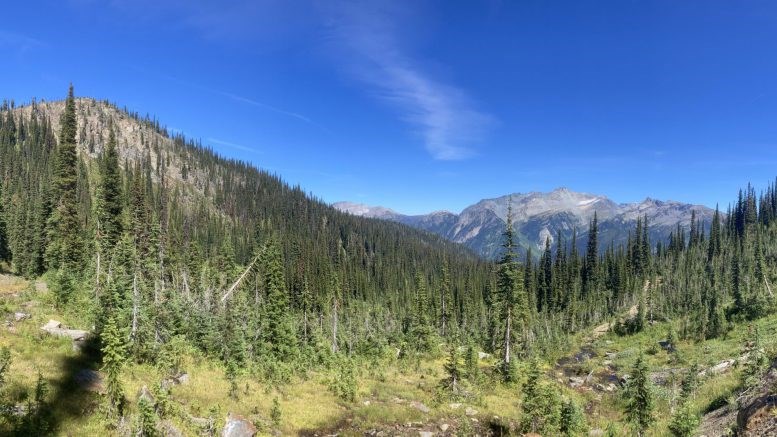A dispute between Taranis Resources (TSXV: TRO; US-OTC: TNREF), the British Columbia government and First Nations groups over the Thor polymetallic project is brewing over deep drilling exploration permit delays.
On October 16, Taranis escalated the battle to the B.C. Supreme Court, seeking to bypass what it says are excessive delays in the permitting process. At issue is Taranis’ complaint against the B.C. Ministry of Energy, Mines and Low Carbon Innovation (EMLI).
The ministry “is unwilling to do its legal duty here because of First Nation pressure,” Taranis president and CEO John Gardiner told The Northern Miner in an interview. “It is regrettable that we have to apply to court to have our rights respected,” Gardiner said, adding Taranis had been waiting more than 14 months for the notice of work permit for the project in the Kootenay mountains to be processed. He says the usual turnaround time for a notice of work permit is around 30 business days.
“We have tried everything else, including letters to Minister Josie Osbourne and Premier David Eby, and we hope the government is asking itself what message this sends to international investors,” Gardiner said.
However, yaqan nuʔkiy, also known as the Lower Kootenay Band, and the Ktunaxa Nation Council (KNC) said in a joint statement on Nov. 2 that Taranis was trying to “cut off [their] voice.” “No is a valid outcome of consultation,” said the groups in their statement.
The Ktunaxa’s view is that as traditional landholders, their consent is paramount, as underscored by the United Nations Declaration on the Rights of Indigenous Peoples and Section 35 of the Canadian Constitution.
Who has the ultimate say?
The belief that First Nations groups should have veto power over land use in B.C. has not been legally established but is affecting the climate of exploration operations in the province, Gardiner argues.
“The government has taken the position that First Nations are the rightful owners of the land,” Gardiner said, suggesting a departure from legal precedent that the Crown holds rights over the vast majority of B.C.’s land. This contention point is generating significant anxiety within the mining community.
Taranis argues that while considering Indigenous rights is part of the Crown’s duty to consult, the Supreme Court of Canada has repeatedly said that First Nations do not have a veto.
“So, the government has to follow the law here,” he said.
The exploration permit application relates to Taranis’s Thor project south of Revelstoke, B.C. The project has been the subject of prior exploration for 16 years, including more than 250 drill holes.
Taranis has been actively prospecting and undertaking permitted shallow drilling activities, with a Nov. 6 press release reporting grab samples grading as high as 14.55 grams gold and 1,705 grams silver per tonne. Still, the problem arose with its application last year to undertake deep-hole drilling to test its theory that an as-yet undiscovered porphyry intrusion underpins the epithermal Thor mineralization at surface.
Robin Younger, a lawyer at Calgary-based McMillan LLP, said the notion that First Nations hold ownership over the lands in question isn’t supported in law. “The contention, therefore, resides not in the letter of the law, but in its interpretation and the actions that stem from such readings,” he told The Northern Miner.
As B.C. grapples with these complexities, the fate of junior miners like Taranis hangs in the balance, Gardiner argues. He suggests the province’s permitting process appears to have been ensnared by a broader debate over Indigenous rights and environmental protection projects.
He specifically refers to the creation of the Incomappleux Park and Incomappleux Nature Conservancy bordering Thor, and potentially clouding the future operation’s permitting prospects. Gardiner alleges these parks were rushed through in record time during the Covid years, with little to no industry or private landholder consultation.
Taranis criticizes these initiatives for lacking industry or private landholder consultation, suggesting a governmental preference for conservation partnerships over mining interests.
A spokesperson for EMLI said the ministry could not comment on a matter before the courts.
In a prior David and Goliath-like dispute, Taranis involved an independent B.C. Ombudsperson who ultimately compelled the government to ‘follow its own regulations,’ resulting in the issuance of a Thor bulk sample permit in 2021, for an application submitted in 2018.
First Nations concern
The First Nations’ concerns mainly centre around the potential impact on the region’s ecological and archaeological values, with implications for species at risk, water quality, and Indigenous rights.
In January, yaqan nuʔkiy and the KNC first learned of Taranis’s intention, prompting immediate letters of opposition citing the need for a Ktunaxa-led vision and plan for the land’s future. The B.C. government’s subsequent commitment to further consultation did little to stall Taranis’s legal action.
For their part, the yaqan nuʔkiy and Ktunaxa leaders stated their nations are open to mining but on terms that respect their heritage and ecological concerns. They highlight a long-term perspective over short-term economic gains, seeking projects that can coexist with their vision for the land’s future health.
As Taranis awaits its day in court, the situation underscores a broader national conversation about the rights of Indigenous peoples, the authority of traditional landholders, and the future of resource development within the framework of Canadian law and Indigenous reconciliation.
Another recent B.C. Supreme Court decision has a bearing. In September, the court ruled that the province must consult with Indigenous groups before granting mineral claims, upholding the Crown’s duty to consult.
The province’s about 5,000 member-strong B.C. Association for Mineral Exploration welcomed the ruling, seeing it as an opportunity to modernize the Mineral Tenure Act, ensuring the mineral claim staking process remains competitive, efficient, and respectful of Indigenous peoples’ rights.



